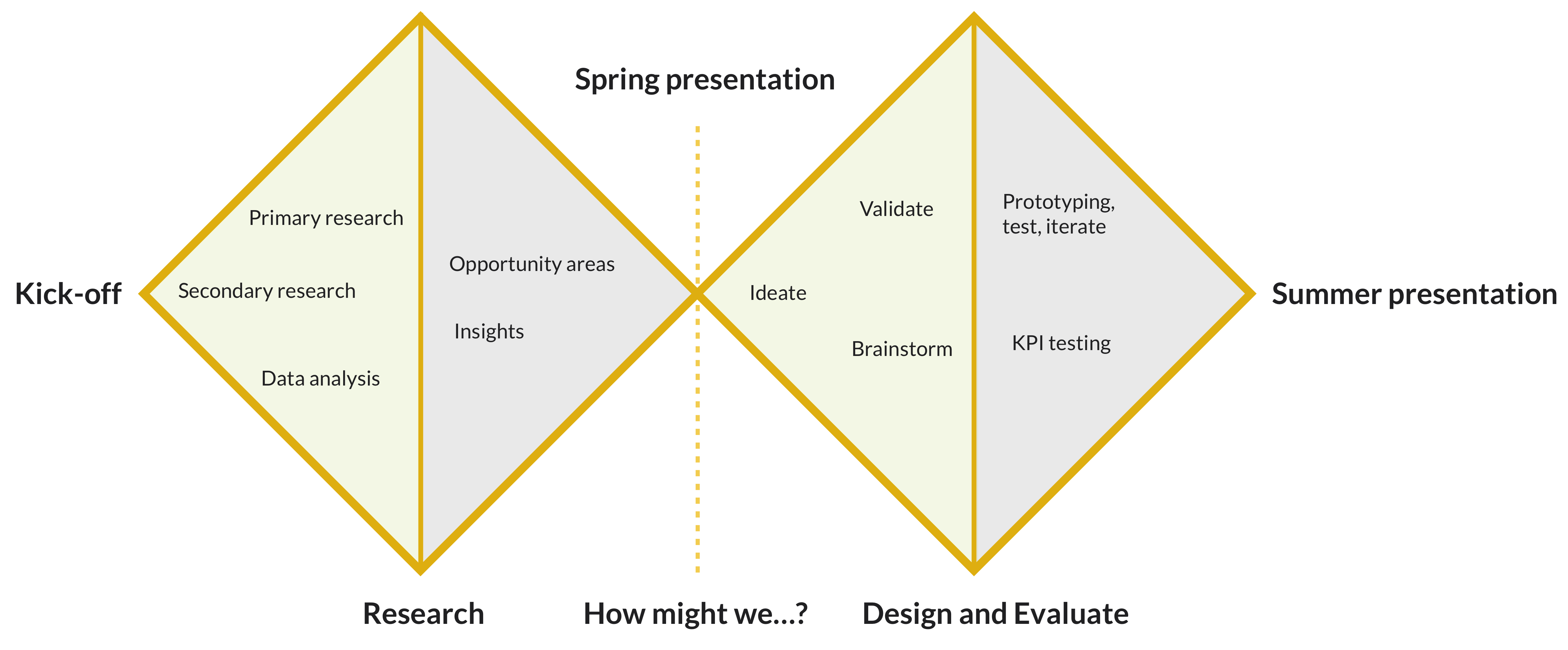
Our team adopted a mixed methods approach throughout the course of our project. We balanced qualitative and quantitative research to draw insights, make decisions, and move forward towards building a preferred future for Nemacolin.
Competitive analysis
Identified Nemacolin’s unique competitive edge and analyzed tech trends in the hospitality industry.
stakeholder mapping
Identified the guests and the groups of resort staff that would be impacted by our design.
contextual inquiry
Conducted 30 first-hand observations with guests and staff to gain in-depth understanding of their current workflows and pain points.
FLOW MODELS & SERVICE BLUEPRINT
Mapped the front- and back-stage activities that help Nemacolin delivers its world-class service.
PERSONAS
Identified four unique trip motivations that influence how guests plan their upcoming trips and what they value.
Customer Journey Maps
Created 4 detailed customer journey maps that represent the nuances in how each persona approaches trip planning.
Storyboards & Speed Dating
Tested 14 design concepts with our target segment to validate needs and evaluate our ideas.
thinkalouds & USABILITY TESTING
Ran 25 online and in-person Thinkalouds to evaluate the usability of the prototype.
RESERVATION DATA ANALYSIS
Analyzed guest reservation data to identify target guest segment and trends in resort revenue and operations.
GUEST FEEDBACK ANALYSIS
Analyzed self-reported guest feedback data to understand guest experience at scale and benchmark against competitors.
Call Center Data Analysis
Analyzed call center data to compare conversions via phone call and website.
RESERVATION DATA ANALYSIS
Listened to and labeled 50 customer service reservation calls, identifying variables for machine learning prototype.
Web Analytics Analysis
Used Google Analytics to establish a baseline for user engagement and conversions on current resort website.
MACHINE LEARNING
Built a Decision Tree model to pinpoint the variables that impact guests’ decisions for hotel types and activities.
LOGIC TREE
Modelled guest decision-making in 18-branch logic visualization.
Trip motivation is the key differentiator in how guests define value of the resort and how they approach trip planning.
Younger guests are a promising demographic for Nemacolin as they have been visiting the resort more often and spending more each visit.
Guests value transparency and flexibility when exploring options for a vacation as well as easily accessible information about their options.
A large portion of the resort’s revenue comes from activities and dining.
Guests often book their hotel rooms first and wait to make activity and dining reservations until closer to their vacation dates or when they are onsite.
Nemacolin doesn’t have the right kind of data and enough data consolidation that would allow for a machine learning model to add value.
Throughout our project, the team simultaneously used qualitative and quantitative research to deepen our understanding of the problem space and the users. Insights from one branch of research often produced questions that could only be answered with the other. Our comprehensive approach allowed us to move forward into our design and logic phases with confidence.